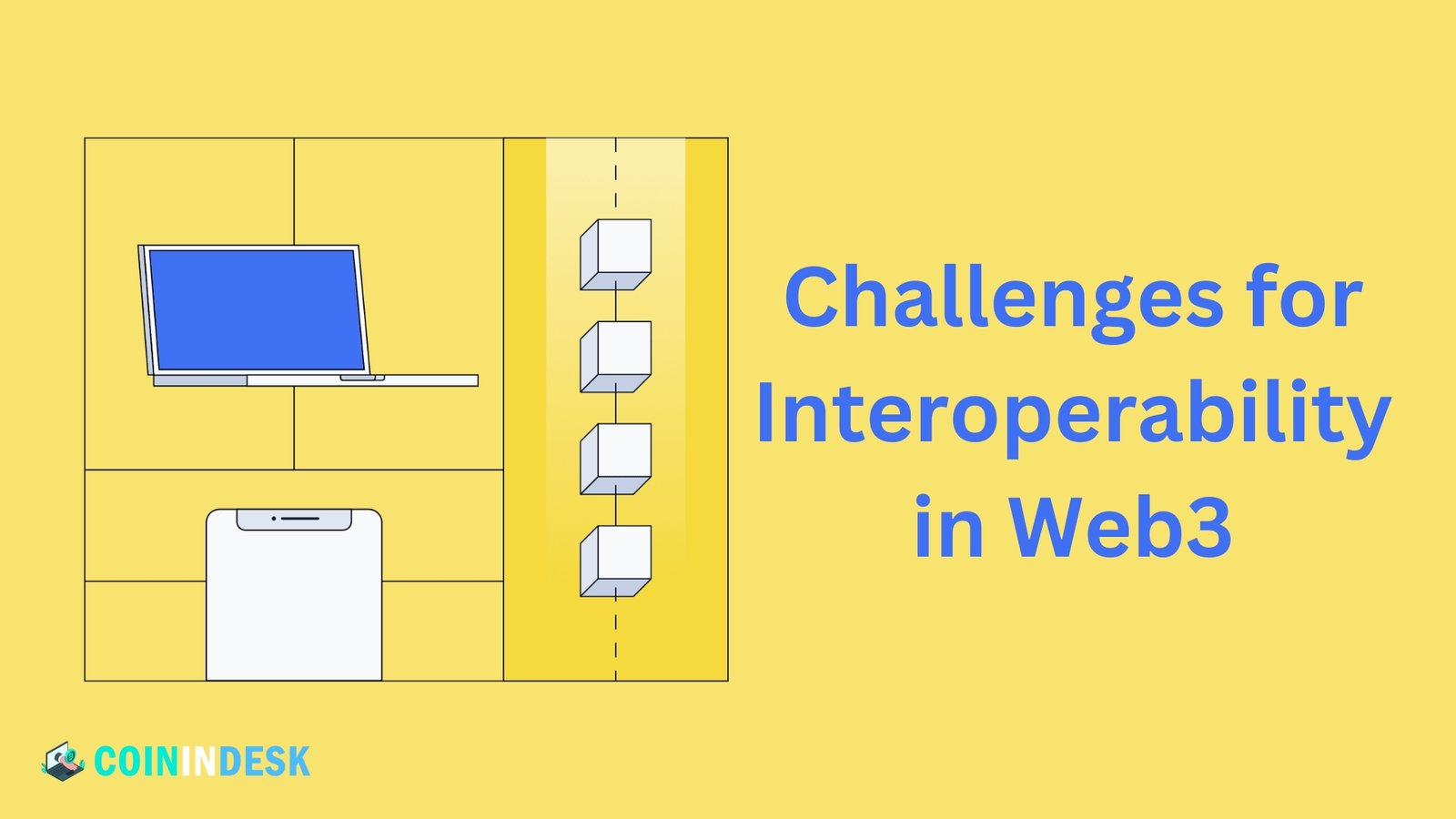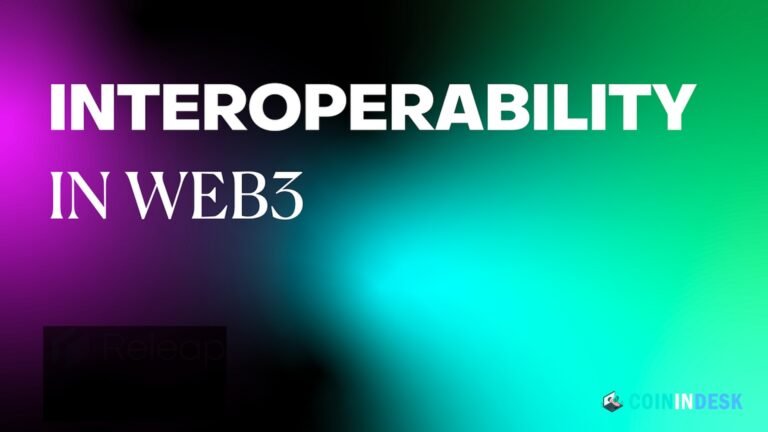Interoperability in Web3: There has been a shift on the internet toward a new age where individuals will have greater agency over their online interactions. Web3, the next-gen internet, uses blockchain technology to build a decentralized web that prioritizes users. Interoperability is one of the key ideas defining Web3’s capacity to induce revolutionary changes. The problems posed by Web2’s lack of interoperability highlight the significance of Web3’s interoperability.
For various systems to be able to share data via a standard protocol, interoperability is a must. When using separate databases for each application, Web2 makes interoperability more difficult. Because it allows decentralized applications (dApps) and web3 protocols to communicate, interoperability has the potential to alter web3. Find out why interoperability is so important and how it will impact web3 user experiences.
Understanding the Fundamentals of Web3 Interoperability
Any definition of interoperability should form the basis of the first section of any such guide. Interoperability refers to the capacity of blockchain networks to communicate and share data. It debunks traditional models in which blockchain networks operate independently using their smart contracts, regulations, and protocols.
One obstacle to the smooth transfer of assets and data between blockchain networks is their incompatibility. For web3 solutions and decentralized apps to work together, interoperability is essential. Using an Amazon gift card to purchase coffee is analogous to interoperability. Another important benefit of interoperability is the capacity to move digital assets between decentralized applications (dApps) on the same blockchain or across multiple blockchains.
How Will Interoperability Look in the Real World?
Digital assets in web3 are more valuable and useful because of interoperability, which is a key component. In the domain of DeFi, you can observe the best compatibility in the web3 example. Token staking, collateralization, and exchange for other digital assets can all be facilitated by DeFi interoperability.
If Starbucks and Spotify were to form a collaboration, it would be an example of interoperability. Consider that Starbucks reward tokens may grant access to exclusive Spotify playlists. Also, if the NFT programs from both companies can work together, it will only benefit the NFTs from both brands that are useful across platforms.
Prominent Challenges for Interoperability in Web3
The many benefits of Web3’s interoperability approach make it seem like a good bet. Blockchain protocols, decentralized applications, and Web3 solutions that can communicate and exchange assets without any hitches can unlock new possibilities. Nevertheless, Web3 interoperability remains elusive due to many obstacles. Analyzing the major obstacles can help discover the best way to achieve real interoperability.
The Problem of Scalability
With more and more people using blockchain networks, scalability will be a major issue in Web 3.0. Another factor that could cause scalability problems is the expansion of blockchain networks. Rising transaction volumes and network congestion may disrupt the smooth movement of data and assets between blockchain networks.
Ambiguity Regarding Incentives
With more and more people using blockchain networks, scalability will be a major issue in Web 3.0. Another factor that could cause scalability problems is the expansion of blockchain networks. Rising transaction volumes and network congestion may disrupt the smooth movement of data and assets between blockchain networks.
Lack of Standardization
The subsequent major obstacle to Web3 interoperability is the absence of protocol standardization in blockchain networks. Consequently, there is no standardized language for Web3 solutions. Obstacles to interoperability in blockchain networks exist due to their distinct characteristics, smart contract languages, and consensus methods.
Concerns for Web3 Security
There are a lot of new problems with web3 security that have arisen because of interoperability. The flaws or hacks in a single blockchain could significantly affect the linked networks. Ensuring the safety and authenticity of cross-chain transactions is crucial to promoting interoperability—impediments to information sharing.
Establishing the Necessity of Interoperability
Several obstacles can be surmounted with the help of the reasons for implementing interoperability. The blockchain ecosystem is very disjointed, highlighting the need for web3 interoperability. Each blockchain has its characteristics and benefits, making it ideal for a certain use case. But different problems arise as a result of blockchain’s dispersed nature, which generates silos.
Due to incompatibilities, decentralized applications can only perform actions on the blockchain they are built on. Assets stored on one blockchain cannot be easily moved to another. Above all else, poor user experiences are a direct result of incompatibility. Users are already overwhelmed by the complexity of the current Web3 scene, which requires them to navigate numerous interfaces, wallets, and exchanges.
Various examples may be found to grasp the significance of interoperability for expanding Web3. Due to their incompatibility with other blockchain networks and platforms, NFTs have little practical use. When NFTs can communicate with one another, they can open doors to new uses and markets. Improved liquidity is another way interoperability benefits DeFi solutions and lays the groundwork for innovative new DeFi applications.
How Will You Achieve Interoperability in Web3?
Because of its potential benefits to consumers and developers, interoperability is becoming an increasingly important part of the Web3 ecosystem. Understanding the best practices for attaining interoperability is also crucial. Learn the best ways to make various Web3 solutions work together more seamlessly.
Cross-Chain Bridges
When considering Web3 interoperability, a cross-chain bridge is the initial solution that springs to mind. Cross-chain bridges facilitate the transmission of data and assets between various blockchain networks. The bridges can use various mechanisms, such as hashed time-locked contracts, to accomplish safe and verifiable transactions between blockchains.
Innovative Incentive Mechanisms
With the promise of distinct incentive systems, Web3 projects can embrace interoperability. Offering liquidity, staking rewards, and token exchanges are the best incentive mechanisms to accomplish Web3 interoperability. Incentives can foster symbiotic connections between interconnected networks.
Sidechains and Layer 2 Scaling Solutions
One such well-known example of a web3 interoperability solution is sidechains. Their one-of-a-kind subsidiary blockchain networks improve scalability and interoperability while providing the same level of security as the main blockchain. Any scalability worries that may prevent interoperability from being widely used can be remedied with layer two scaling solutions.
Atomic Swaps
Atomic swaps’ unique capability makes them an effective addition to interoperability in the Web3 example list. They ensure that assets can be transferred directly across blockchains without going through any middlemen. With their trustless approach, atomic swaps remove counterparty risks.
Oracles
Decentralized Oracles might significantly accelerate the development of Web3 ecosystem interoperability. When third-party services called Oracles gather data from external sources, they check for data integrity and correctness. Web3 solutions can use Oracles to facilitate frictionless interaction between various blockchain networks.
Interoperability Protocols
Interoperability protocols are a great option for creating standardized protocols. Thanks to the defined protocols, blockchains will be able to communicate with each other without any hitches. Interoperability protocols establish uniform rules for carrying out smart contracts and guaranteeing efficient data sharing.
Shaping the Future Prospects for Web3 Interoperability
Opportunities for expanding Web3 seem to be growing due to the development of blockchain technology. If we want to know where interoperability is going, we need to keep an eye on the most significant innovations in the field.
Growth of Multi-chain Platforms
As far as interoperability goes, multi-chain systems are where it’s at. Popular options like Avalanche, Polkadot, and Cosmos have been handling issues with interoperability quite well. These platforms are nerve centers that link many blockchains together to generate an interdependent ecosystem.
Maturity of Interoperability Solutions
The maturity level of various interoperability solutions will determine the future expansion of Web3 interoperability. When the Web3 ecosystem reaches its full potential, new opportunities will arise to enhance the functionality and security of interoperability solutions. Innovative improvements in encryption methods, consensus algorithms, and cross-chain communication protocols would propel the development of interoperability solutions.
Measures to Push for Standardization
Overcoming obstacles to standardization is crucial for the future of interoperability. With universally accepted standards for all Web3 protocols, Web3 may finally experience genuine interoperability. Industry participants and Web3 communities must work together to strengthen standardization efforts.
Conclusion
In this age of rapid web3 development, the need for web3 interoperability is becoming increasingly clear. There has been a marked increase in the profile of numerous web3 solutions, including NFTs and metaverse initiatives. Nevertheless, web3’s potential is limited because many web3 solutions function in isolation. In the realm of web3, familiarity with the idea of interoperability and the difficulties in attaining it in the pursuit of standardization could lead to promising advances in interop. Another important consideration for the Web3 project. The efficient application of various interoperability solutions, including cross-chain communication protocols and interoperability projects.


